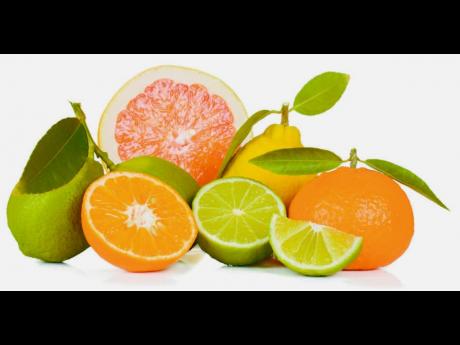Elizabeth Morgan | Jamaica’s production and export of citrus fruits
…Another agriculture tragedy
“The (citrus) industry faces an uncertain future”. This statement by Owen Jefferson in his 1972 book, ‘The Post-war Economic Development of Jamaica’, is relevant today. Jefferson also pointed out that in 1945, the Jamaican citrus industry was described as the only large-scale crop which could possibly hold its own in a free trade world.
This, he went on to say, makes strange reading in view of the precarious position of the industry then. This again is another statement relevant to the industry in 2024. The information available shows that the citrus industry in Jamaica is indeed now on life support.
In considering the state of agriculture in Jamaica in the past six years in this column, I have looked at Jamaica’s traditional exports, primarily sugar and bananas, that have been lost and the earnings have not been replaced. Here, I refer to my article of August 11, 2021 titled ‘Where have our traditional exports gone?’
I am taking a closer look at some of our other traditional exports. Today, I am focusing on citrus, which Jamaica started to export to the USA in 1878, and which includes sweet oranges, grapefruits, ortaniques and ugli. Ortaniques and ugli are brands unique to Jamaica as they were propagated here. The origin of grapefruit is recognised as Caribbean, as it most likely was propagated in Barbados.
Of course, citrus fruits (oranges, lemons, limes, and others) were introduced to Jamaica with the arrival of the Spanish. Citrus fruits, including versions of ortaniques and grapefruits, are produced in other countries. The world’s largest producers and exporters of citrus fruits include Spain, South Africa, China, Mexico and the United States. This is a very competitive export product. Nevertheless, as Jefferson signalled, one would have thought that Jamaica would have been able to hold a space in the export markets with ortaniques and ugli.
The history of Jamaica’s export of citrus fruits from 1900 has had its ups and downs due to wars, protectionist policies among trading partners, and competition in the markets, but it was surviving. In the early 1940s, it was necessary to bring organisation to this local industry of mainly small farmers, many just having a few trees. The Citrus Growers Association was established in 1944 and the industry was reorganised.
I am sure that many of us recall driving through Bog Walk and Porus and stopping to buy citrus fruits from the vendors on the intricately woven sticks. It seemed citrus was in abundance, supplying both the local and export markets. I recall visiting Pratville in Manchester and was amazed at all the citrus trees and masses of tangerines.
Jamaica was then not only exporting fresh oranges, ortaniques, ugli, and grapefruits to the USA, Canada and Britain, but also value-added products, canned segments, canned juice, marmalade pulp and peel, and essential oils. Jamaica was producing concentrate.
It seems those days are history.
ATTACK OF THE DEADLY DISEASES
Many of you may have noted that your backyard lime and orange trees were not looking so healthy and may have eventually died. We may have noted that limes were scarce and more expensive. You might not have known it, but the citrus diseases had landed and were spreading through the citrus crops.
In 1992, the Citrus Tristeza Virus was diagnosed in Jamaica. In 1993, the Brown Citrus Aphid, an organism which is an efficient carrier of the Citrus Tristeza virus, was also confirmed present in Jamaica. This dealt a severe blow to the Jamaican citrus industry and its many small farmers.
Things were to get much worse, however, when, in 2009, the Citrus Huanglongbing or greening disease was confirmed in all citrus growing areas in Jamaica. This disease has no cure. It requires replanting with clean stocks. From reports read, this has proven to be a major challenge to Jamaica’s small farmers.
With the UN Food and Agriculture Organization (FAO), the Citrus Greening Management Programme was implemented. The large citrus producer, Trade Winds Jamaica Limited, seems to have had the most success in managing these diseases. Nevertheless, in a Gleaner article of November 29, 2023 titled ‘Citrus supplies under pressure’, Trade Winds pointed to the problems confronting the citrus industry and its need to decrease its exposure by diversifying into other crops and products (dairy).
The general assessment is that Jamaica’s citrus industry is in serious decline due to the difficulty in managing these diseases, lack of proper regulation and management, and investment. Jamaica’s exports have declined from millions of US dollars in 2004 to thousands in 2021, and falling. Most exports are now to Barbados. So, it seems to me that another traditional export is on the way out, or severely shrinking.
My questions are: how did citrus get to this state of decline, ravaged by known diseases? And can anything more be done to recover the industry at this stage? Or, are we witnessing another agriculture tragedy!
Elizabeth Morgan is a specialist in international trade policy and international politics. Email feedback to columns@gleanerjm.com

